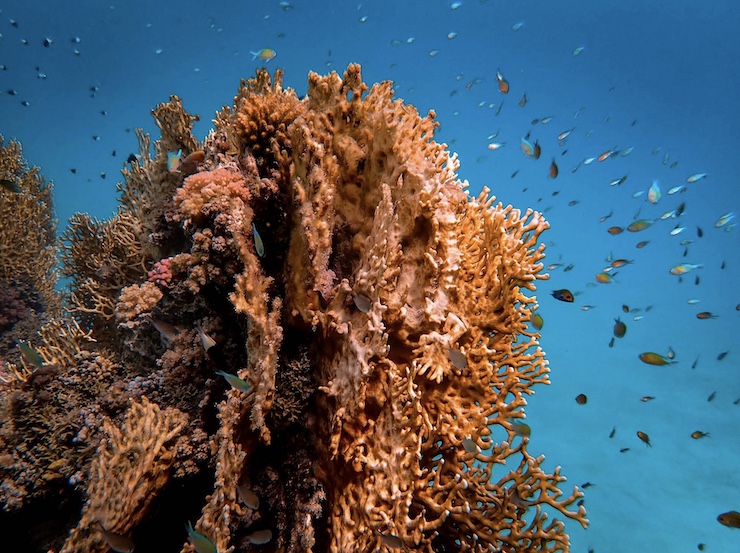
Located off the coast of Queensland, the Great Barrier Reef (GBR) is the largest coral reef system on planet Earth and the largest single structure formed from living organisms. It is made up of 900 islands, nearly 3,000 individual reefs, and covers 133,000 square miles in the Coral Sea. It is also home to more than 9,000 species of creatures. In 1981, the GBR was selected as a World Heritage Site, and in 1997, it was recognized as one of the Seven Natural Wonders of the World.
Unfortunately, like many of Earth’s majestic natural ecosystems, the GBR has come under threat from human-induced environmental factors. The Great Barrier Reef Marine Park Authority (GBRMPA), a government agency that protects the majority of the reef, considers climate change leading to coral bleaching to be the GBR’s gravest threat. The US National Oceanic and Atmospheric Administration explains that, “When water is too warm, corals will expel the algae (zooxanthellae) living in their tissues, causing the coral to turn completely white. This is called coral bleaching. When a coral bleaches, it is not dead. Corals can survive a bleaching event, but they are under more stress and are subject to mortality.”
The GBR has faced several mass coral bleaching events, including a significantly devastating event during the summer of 2024. GBRMPA Reef Authority Chief Scientist Dr. Roger Beeden said that monitoring “the health of the Reef is a year-round effort for the Reef Authority, and it’s critical for us to understand what is happening on the Reef so we can target our management actions to protect the Reef and strengthen its resilience.” In the past, scientists would use manned aircraft to fly over the reef, capturing images. These images were then studied and compared to those taken by satellites. Today, as Dr. Beeden points out, the monitoring of the reef can be made more efficient with the regular deployment of drones.
Over the past year, a team of researchers has been collecting drone images of the GBR to determine coral bleaching levels. Jane Williamson, Karen Joyce, and Vincent Raoult published their findings on using drones to monitor the reef, which correlate directly with the coral bleaching results expressed by Dr. Beeden. The team’s colleague, George Roff, used drones to document the North Point Reef at Lizard Island in March 2024. Jane and her team returned to document the same area in June. The team then took a snorkeling expedition to get a firsthand view of the reef as well.
Upon comparing the images, the researchers were shocked. “The drones flew at an altitude of about 20 meters and collected imagery at set times. We then joined the images into two large maps of the reef—one for March and one for June,” Jane’s team states. “The first map showed corals were bleached or ‘fluorescing’—appearing brightly colored as they released algae. The June map showed more than 97% of the same corals had died.” The team had four other experts confirm their findings and is awaiting the Australian Institute of Marine Science (AIMS) annual report on coral health to collaborate on restoration efforts.
AIMS Senior Research Scientist Dr. Neal Cantin noted the importance of drone-collected images of the GBR and said researchers now need to take the next step. “Aerial surveys are a crucial tool for a reef ecosystem as large as the Great Barrier Reef and show that this coral bleaching event is widespread, or what is commonly called a mass coral bleaching event,” Dr. Cantin said. “We now need to combine the spatial coverage captured from the air with in-water surveys to assess the severity of coral bleaching in deeper reef habitats across the different regions of the Marine Park.”
Agreeing with Dr. Cantin’s assessment, Jane and her team are eager to continue using drone technology to assist. The next steps, they said, “should include using remote sensing technologies, such as aerial drones and underwater remotely operated vehicles, to efficiently survey large areas. Both methods can provide standardized data and images of reefs, from shallow to deeper areas, which will provide baseline data for future research.” Though the reef is under pressure, Dr. Beeden pointed out that it has recovered from previous coral bleaching events, damage from cyclones, and infestations of invasive crown-of-thorn starfish. With drone technology, continued research and management operations, and a global commitment to reducing climate change, Dr. Beeden is confident that the GBR will find its way back to a fully healthy state.
|